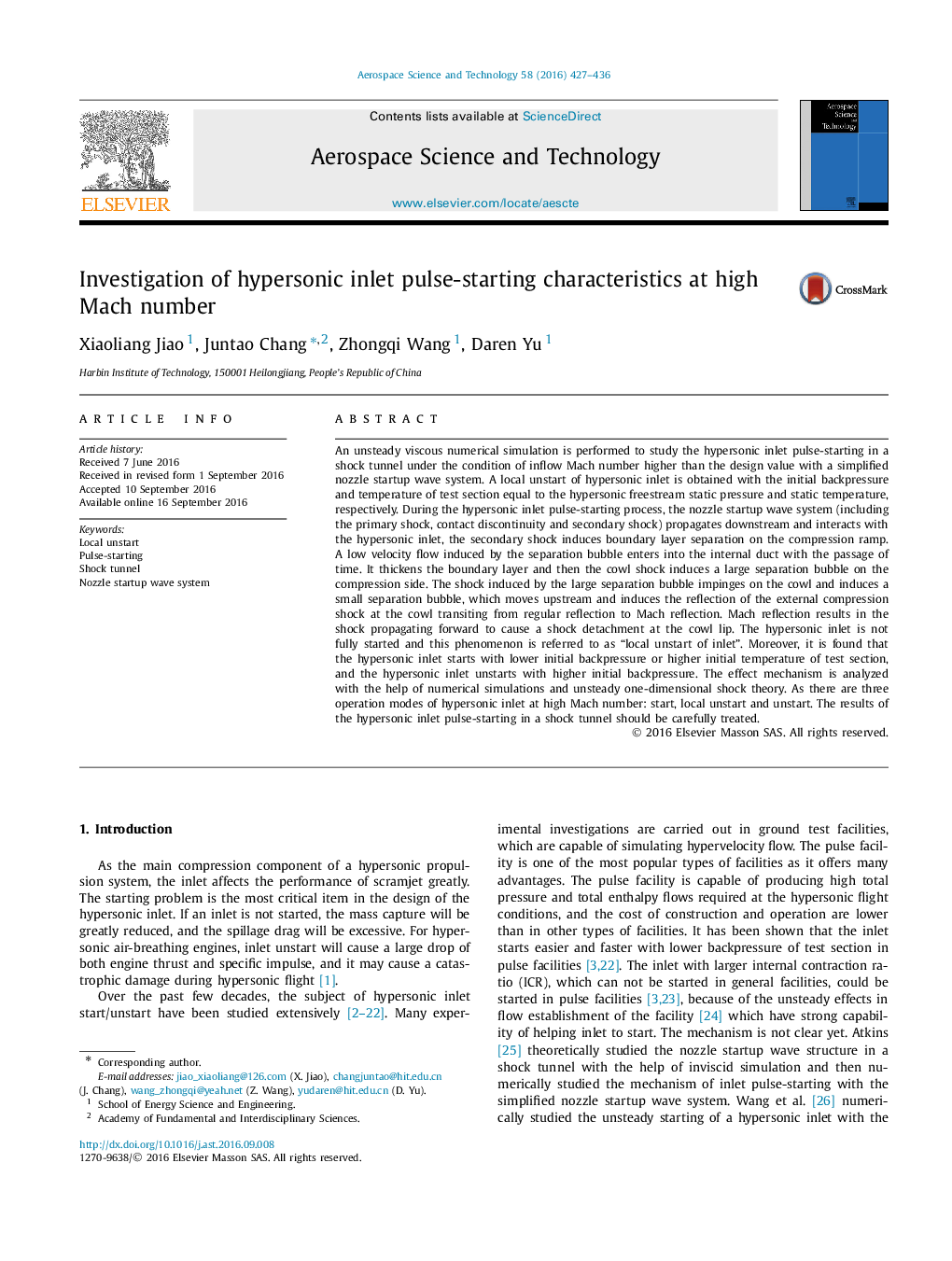| Article ID | Journal | Published Year | Pages | File Type |
|---|---|---|---|---|
| 8058487 | Aerospace Science and Technology | 2016 | 10 Pages |
Abstract
An unsteady viscous numerical simulation is performed to study the hypersonic inlet pulse-starting in a shock tunnel under the condition of inflow Mach number higher than the design value with a simplified nozzle startup wave system. A local unstart of hypersonic inlet is obtained with the initial backpressure and temperature of test section equal to the hypersonic freestream static pressure and static temperature, respectively. During the hypersonic inlet pulse-starting process, the nozzle startup wave system (including the primary shock, contact discontinuity and secondary shock) propagates downstream and interacts with the hypersonic inlet, the secondary shock induces boundary layer separation on the compression ramp. A low velocity flow induced by the separation bubble enters into the internal duct with the passage of time. It thickens the boundary layer and then the cowl shock induces a large separation bubble on the compression side. The shock induced by the large separation bubble impinges on the cowl and induces a small separation bubble, which moves upstream and induces the reflection of the external compression shock at the cowl transiting from regular reflection to Mach reflection. Mach reflection results in the shock propagating forward to cause a shock detachment at the cowl lip. The hypersonic inlet is not fully started and this phenomenon is referred to as “local unstart of inlet”. Moreover, it is found that the hypersonic inlet starts with lower initial backpressure or higher initial temperature of test section, and the hypersonic inlet unstarts with higher initial backpressure. The effect mechanism is analyzed with the help of numerical simulations and unsteady one-dimensional shock theory. As there are three operation modes of hypersonic inlet at high Mach number: start, local unstart and unstart. The results of the hypersonic inlet pulse-starting in a shock tunnel should be carefully treated.
Keywords
Related Topics
Physical Sciences and Engineering
Engineering
Aerospace Engineering
Authors
Xiaoliang Jiao, Juntao Chang, Zhongqi Wang, Daren Yu,
